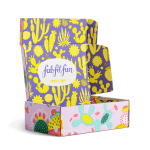
In today’s environmentally conscious world, the shift toward sustainable packaging is no longer just a trend—it’s a necessity. Eco-friendly boxes and bags have emerged as powerful tools in the fight against plastic pollution and waste, offering businesses and consumers alike a chance to make a positive impact on the planet. From biodegradable materials to reusable designs, these packaging solutions are redefining what it means to be both practical and planet-friendly.
The environmental crisis caused by single-use plastics has reached a tipping point. Traditional packaging, often made from non-renewable resources, contributes significantly to landfill waste and ocean pollution. Eco-friendly boxes and bags, on the other hand, are crafted from materials like recycled paper, cardboard, plant-based polymers, and even mushroom-based composites. These alternatives break down naturally, reducing their environmental footprint and helping to create a circular economy where waste is minimized, and resources are reused.
One of the most compelling aspects of eco-friendly packaging is its versatility. Whether it’s corrugated cardboard boxes for shipping, compostable bags for groceries, or stylish paper gift boxes for retail, there’s a sustainable option for nearly every need. Brands are increasingly adopting these solutions to align with their corporate social responsibility goals and meet the growing demand from eco-aware customers. For instance, many companies now use boxes made from 100% post-consumer waste, which not only reduces deforestation but also saves energy and water during production.
Beyond the environmental benefits, eco-friendly boxes and bags offer practical advantages. They are often lightweight, which can lower shipping costs and reduce carbon emissions during transportation. Additionally, innovations in design have led to durable, water-resistant options that rival their plastic counterparts in functionality. For example, bags made from recycled PET bottles or cornstarch-based polymers are both sturdy and sustainable, proving that going green doesn’t mean compromising on quality.
Consumer behavior is also driving this change. A recent study found that over 70% of shoppers prefer to buy from brands that demonstrate a commitment to sustainability. By switching to eco-friendly packaging, businesses can enhance their brand image, build customer loyalty, and even tap into new markets. Imagine unboxing a product wrapped in a beautifully designed, recyclable box—it creates a memorable experience that resonates with values of care and responsibility.
However, the journey toward widespread adoption of eco-friendly packaging isn’t without challenges. Some critics point to higher upfront costs or limited availability of materials. Yet, as technology advances and production scales up, these barriers are steadily diminishing. Governments and organizations worldwide are also stepping in with policies and incentives to promote sustainable practices, making it easier for businesses to make the switch.
In conclusion, eco-friendly boxes and bags represent more than just a packaging alternative—they are a symbol of a broader movement toward sustainability. By choosing these options, we can collectively reduce waste, conserve resources, and protect our planet for future generations. The next time you receive a package or carry a shopping bag, consider the impact of your choice. Together, we can wrap the world in green.




Leave a Message